6 Secret Gardens in Paris That Everyone Must Visit
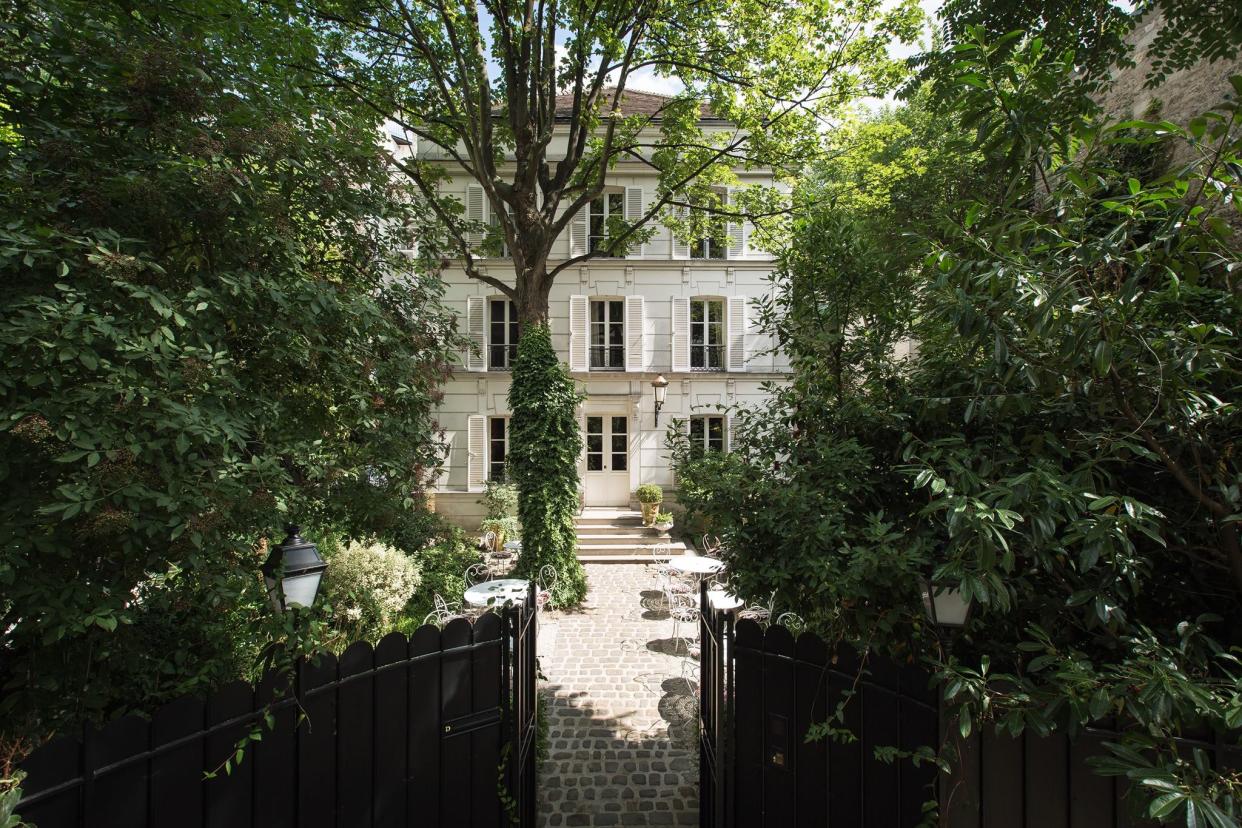
Photo: Hôtel Particulier Montmartre
Paris has a leafy little secret: Tucked into grand boulevards, behind museums and churches, and inside hotels are secret gardens designed as back-to-nature reprieves. Secluded square? Woodsy park? Lush courtyards that look (and smell) more countryside than French capital? If you know where to look, the City of Light brims with verdant escape hatches from city life.
Why all of the greenery? In 1850, when Napoleon III reconfigured Vieux Paris into the elegant city we know today, he tapped George-Eugène Haussmann to construct statement-making boulevards and stone edifices as well as public parks to act as “lungs” for the city. Centuries-old woodlands and royal hunting grounds were transformed into rambling green spaces at the four points bordering the city, and dozens of smaller squares and gardens were built within the 20 arrondissements. Over the decades, French leaders have added more green space. Paris now boasts more than 400 gardens and parks, woods, and squares and has plans to become Europe’s greenest city by 2030. “These gardens are like a tranquil bubble. My clients love discovering this special, secret side of Paris,” says Anne Murano, who leads custom art and fashion tours in Paris.
Here are a few of our favorite foliage-forward hideaways in the city.
Hôtel Particulier Montmartre, 18th arrondissement
In Montmartre, off of Avenue Junot near Sacré Cœur, the former home of the Hermès family has been recast into a five-suite hotel with old-world charm. A highlight of Hôtel Particulier is the massive wraparound garden designed by AD100 Hall of Fame member Louis Benech, the architect of the Jardin des Tuileries. During the summer, the Grand Salon restaurant moves outside to wrought-iron tables under the shade of magnolia and ivy-kissed sycamore maple trees. Surrounded by hot pink Daphne odora, golden St John’s Wort, and a crew of roving chickens (plus the clank of pétanque balls; Club Lepic Abbesses Pétanque is next door), diners enjoy classic house-made dishes (using only French products), and a scene that channels the 19th century. Lunch, dinner, and a classic tea are served daily.
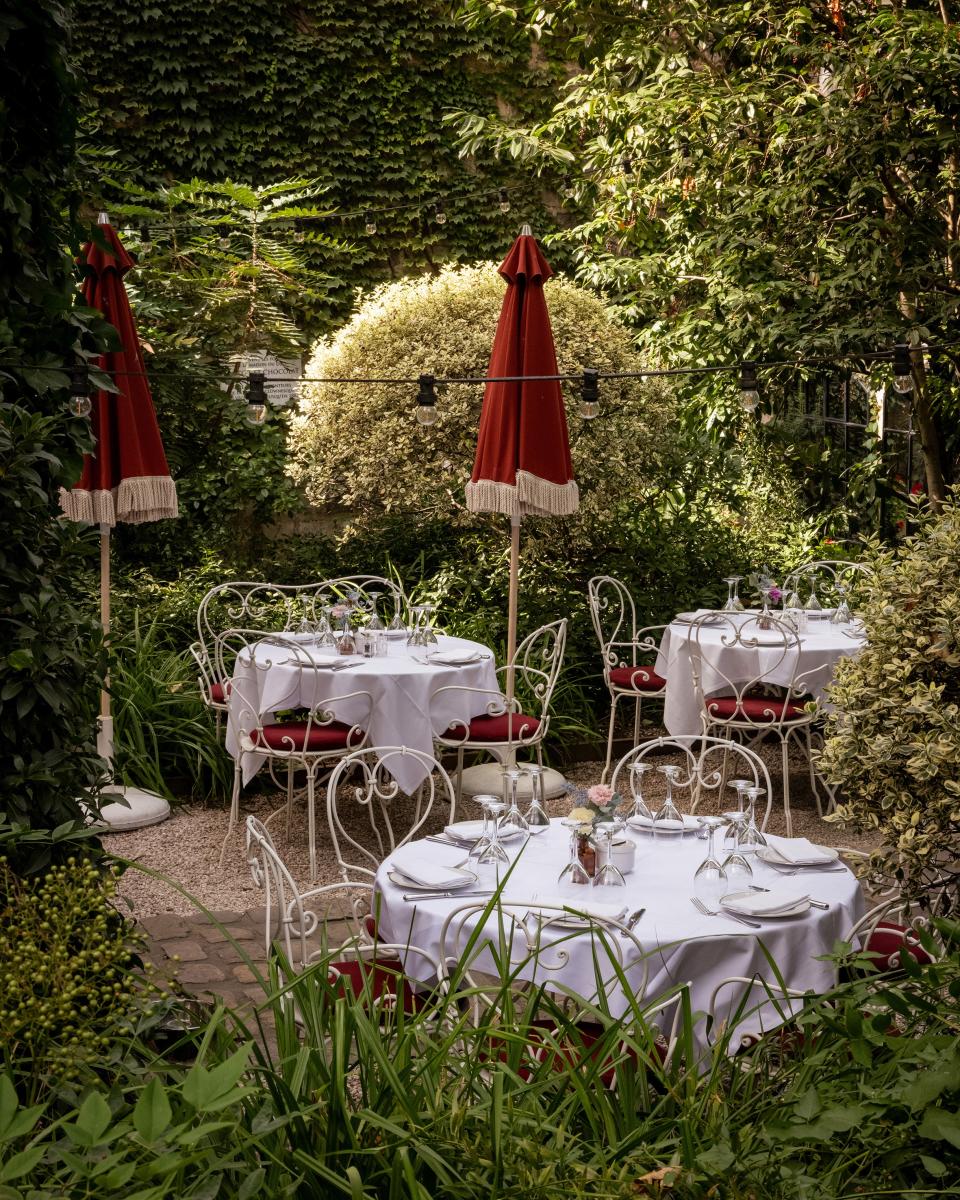
La Vallée Suisse, 8th arrondissement
Existing quietly off the Champs-Élysées on Avenue Franklin Delano Roosevelt, within one of the most trafficked parts of Paris, is a 1.7-acre idyll of twisted vines and stone archways set off by lemon trees, evergreens, maples, bamboo, lilacs, overgrown ivy, and a Seine-fed pond with a waterfall. Constructed by Haussmann-era engineer Jean-Charles Adolphe Alphand, the garden is a 19th-century time capsule; it has perfect benches to read, nap, or daydream on.
Garden at Hôtel-Dieu, 4th arrondissement
Hospitals are not likely locations for wowza gardens. But, on Île de la Cité, the ancient Hôtel-Dieu (established in 651) has a formal garden of symmetrically sculpted boxwoods flecked with pink geraniums, impatiens, and Indian roses concealed within a Romanesque arched courtyard. The wow factor is twofold—the garden itself, and the fact that this serene, lost-in-time spot is next to the tourist-filled Notre-Dame Cathedral.
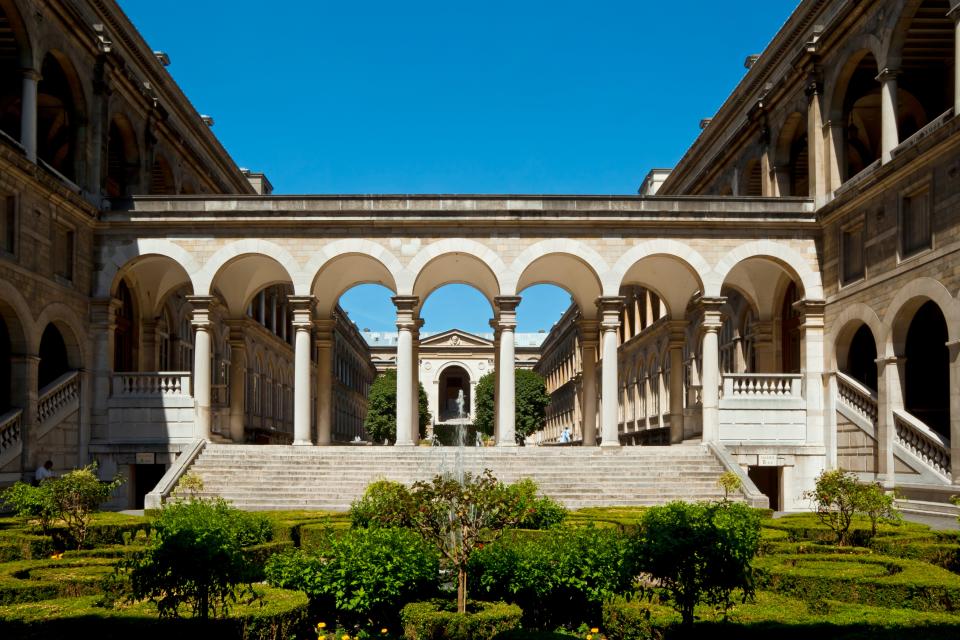
La Réserve Paris, 8th arrondissement
Wrought-iron balconies. Mansard roofs. Cream stone façades. Haussmann’s hôtels particuliers, or aristocratic mansions, are what gives Paris its sophisticated patina. On Avenue Gabriel, steps from Élysée Palace (the President’s residence), one such mansion turned hotel—La Réserve Paris—offers travelers a glimpse of la belle vie (the manse was originally built for Napoléon III’s half-brother, the Duc de Morny) via a visit to the lush interior courtyard. As you sip your rosé (try the Château La Mascaronne; it’s produced by the owner in Provence) or tuck into an à la carte meal, you’ll be surrounded by palm trees, Japanese maple, Fatsia Japonica, and Portugal laurel (dripping in white racemes) plus flowering privet and camellias. That decidedly non-city scent? It’s fresh jasmine, which is stippled throughout the garden.
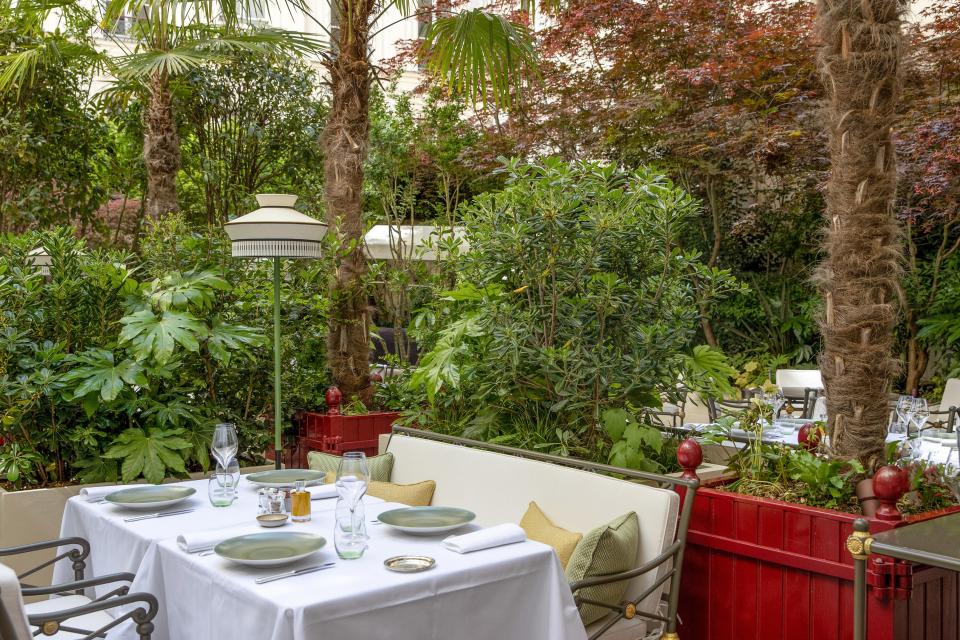
Le Chalet des Îles, 16th arrondissement
Picture this: a chalet in the middle of the verdant, wildlife-filled Bois de Boulogne reachable only by boat. In 1857, Empress Eugénie de Montijo transported the chalet from Switzerland (as her husband Napoleon III was remaking the city) and plopped it on an island in the park’s Lac Inférieur for Parisians to enjoy. That chalet was destroyed by fire in 1920, rebuilt, and, last month, relaunched as the eco-friendly, timber-infused bolthole Le Chalet des Îles, masterminded by architect Nicolas Laisné. Chef Pierre Chomet oversees an indoor bistronomic restaurant and an outdoor five-course tasting experience, where guests dine against a backdrop of oak, plane, and cherry trees, various conifers, herbs, and hydrangeas. There is also a bar with a large terrace overlooking the water.
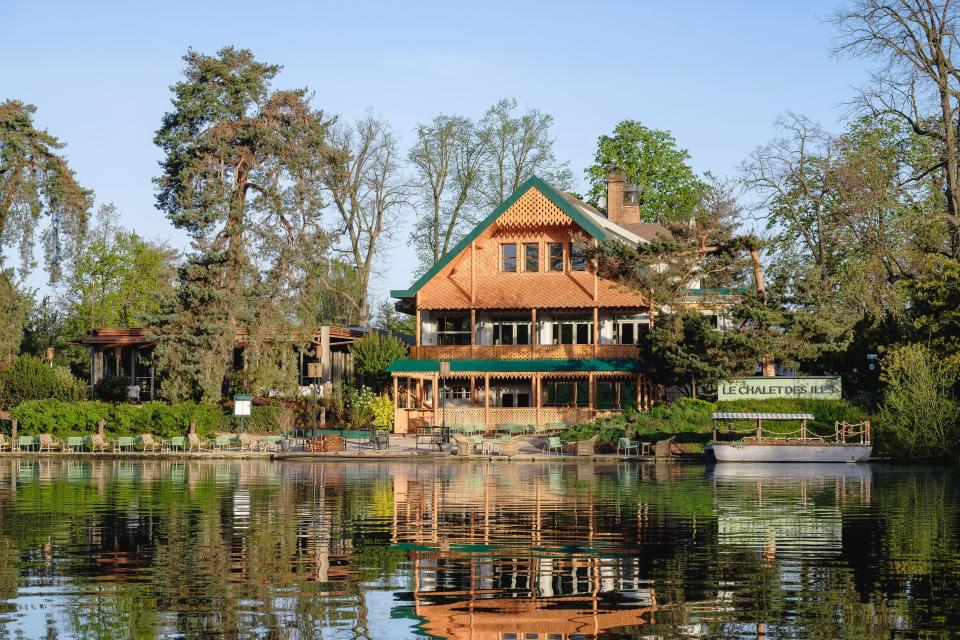
Le Chalet des Îles
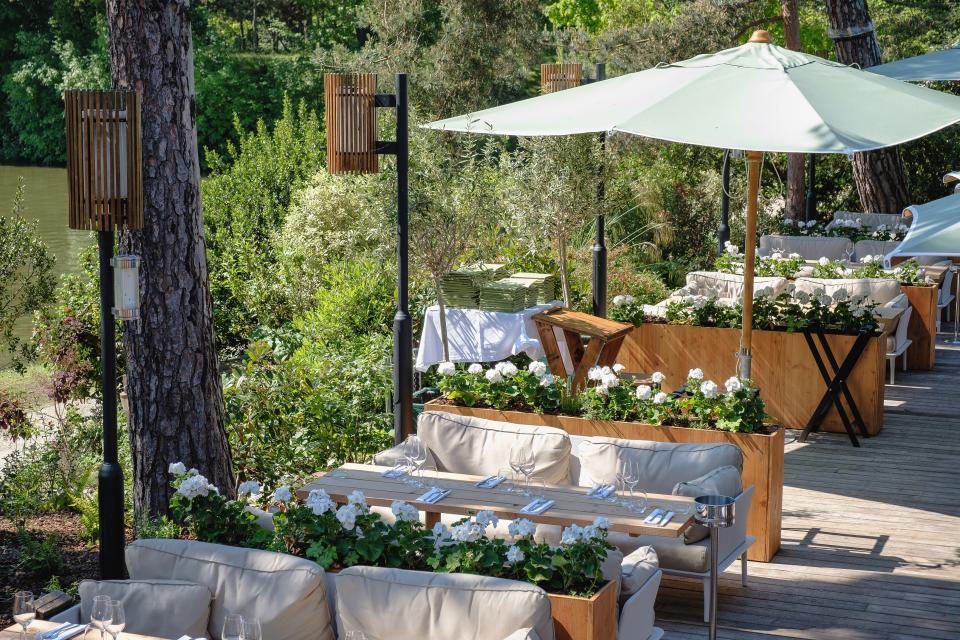
Chalet des Iles
Square Roger-Stephane, 7th arrondissement
Visiting Le Bon Marché, Paris’s fabled department store, is essential sightseeing. For a post-shopping pick-me-up, buy a snack at the store’s adjacent La Grande Epicerie, walk to the far end of Rue Récamier, and step into a naturalistic setting that seems plucked from a Balzac novel. Amble past dense foliage dominated by a weeping beech tree and settle on a bench to admire the locale: Japanese pagoda trees, rhododendrons, Japanese lilac, magnolia, and sweet-smelling honeysuckle. Though smack in the middle of Saint-Germain-des-Prés, all you’ll hear is the trill of birds and trickle of a cascading waterfall.
Originally Appeared on Architectural Digest

